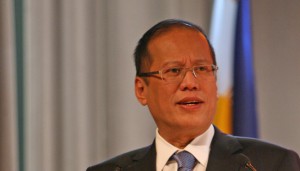June 7, 2012, cogitasia.com
Philippine president Benigno Aquino is in the United States for a visit that will include his first Oval Office meeting with U.S. President Barack Obama.
Aquino’s trip caps a revitalization of the U.S.-Philippine alliance that has been occurring over the past few years. While the Philippines is the oldest of the United States’ five treaty allies in Asia, relations were rocky during the Cold War and were strained after the U.S. lost its bases there in 1992. However, a series of recent developments have helped align U.S. and Philippine interests and injected momentum into the relationship. These include the Obama administration’s rebalancing toward Asia, a string of maritime and territorial disputes between the Philippines and China, Aquino’s impressive domestic achievements, and a flurry of diplomatic activity between both sides. The alliance has rarely been better. But Aquino’s visit is an opportunity for both sides to strengthen ties even further, as well as strike a better balance between security and political ties on one hand and trade and economic cooperation on the other.
Beyond a discussion of events at Scarborough Shoal (what the Philippines calls Bajo de Masinloc), where Beijing and Manila were locked in a recent standoff, both the United States and the Philippines are likely to boost defense ties. After several run-ins with Chinese vessels over the past two years, the Philippines has realized it is outmatched militarily and mounted an ambitious defense modernization program. It has looked to Washington for help and is likely to seek further assistance, both in terms of more military hardware and facilitating discussions with other U.S. allies. Washington will likely seek additional ways to make the Philippines a part of its ‘rebalance’ to Asia. UPDATE: Increased exercises and training, as well as more access to bases, such as the deal struck at the Shangri-La Dialogue to consider limited U.S. deployments to Subic Bay and Clark Air Force Base as the Philippine Star is reporting, can be expected.
There are also several opportunities to strengthen the alliance in the realms of economics and trade. President Aquino is searching for support from foreign investors to drive his administration’s Public Private Partnership program, and U.S. businesses can provide it. He will also want Congress to pass the SAVE Act, which would lift tariffs on Philippine-made garments utilizing U.S. textiles. Both sides will also discuss the prospects of Manila joining the Trans-Pacific Partnership (TPP), which would be a major boost to the economic relationship. Here, the top business leaders that are accompanying Aquino on his visit can provide the necessary encouragement and backing to sign onto the pact.
Senator Richard Lugar, who led an official delegation under then U.S. president Ronald Reagan to observe the Philippine presidential election of 1986, said, “It is necessary that the two countries discern new ways to expand trade, account for their mutual defense, and promote stability throughout the region.” Aquino’s visit is an opportune time to do what Lugar suggests and strengthen and balance a relationship not only vital to both countries, but Asia as a whole.
Mr. Ernest Z. Bower is a senior adviser and Director, Southeast Asia Program at CSIS. Mr. Prashanth Parameswaran is a researcher with the CSIS Southeast Asia Program


